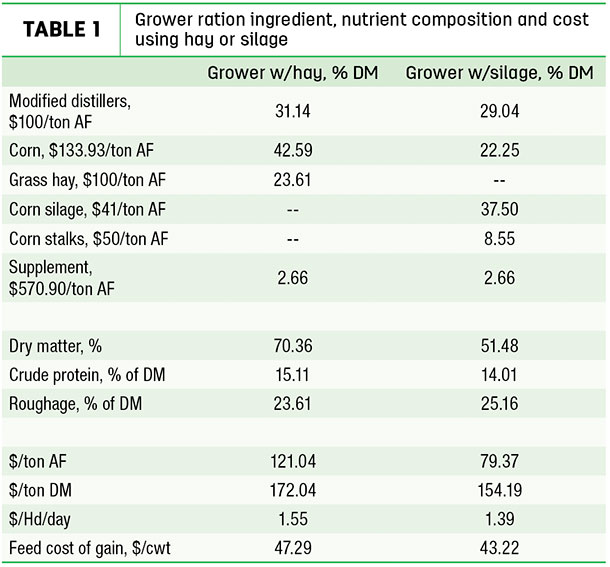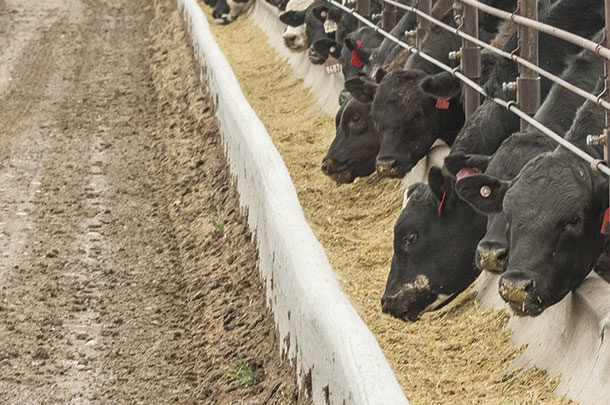Therefore, forage quality is most critical for those production phases that occur before finishing (i.e., cow-calf and backgrounding). Harvesting and storing forage crops as silage has been an important component of cattle feeding programs for many years, and some early instances of producers ensiling crops for subsequent feeding date back to the late 1800s.
While silages have always been a centrally used feed for cattle, of late many producers are re-evaluating the use of corn silage in forage-based rations, which is the focus of this discussion.
In the U.S., total acres harvested for all hay production in 2017 were 12 percent lower than in 1990, with production down approximately 10 percent, according to USDA data. During that same time, both acres harvested and tonnage of alfalfa hay produced declined by approximately 35 percent nationwide.
However, during the same 27-year time span, all acres harvested for corn in the U.S. increased by 22 percent, with total grain production increasing by 84 percent. It appears the cattle feeding industry has responded to these changes in forage availability by altering the type of forages used in rations, specifically using more crop residues and less alfalfa hay.
Interestingly, research data suggest corn silage use in feedlots has stayed relatively constant and, recently, we have noticed a general trend of more interest in corn silage production, particularly from producers who have not harvested silage as of late. During the 1970s, corn harvested for silage in the U.S. averaged over 9.2 million acres per year, yielding approximately 12.4 tons per acre.
Over the past eight years, U.S. acres harvested for silage have averaged 6.3 million per year at 19.1 tons per acre. While silage acres have declined from 40 years ago, production has clearly not dropped due to improvements in corn hybrid technology and growing conditions.
These nationwide data would include silage harvested for dairy production but lend support to the idea silage use in the beef industry appears to have either remained steady or increased in recent years. In 2017, producers in Nebraska, for example, harvested a little over 2 percent of the state’s total corn acres for silage, so opportunity certainly exists for more silage production with continued growth in corn production.
Corn silage in forage-based rations lends many benefits to operations, particularly for diversified producers who own or rent crop ground. Although silage represents a significant time and monetary investment, one of the biggest advantages is simply having a high-quality feed (if harvested and managed properly) stored in inventory.
This gives operations with silage more ration flexibility and, at times, they may be less affected by forage shortages due to drought or other causes. A disadvantage is: Once the crop is chopped and packed, it usually must be fed for it to be marketed – unlike hay, which can be sold more easily due to its ability to be transported with less cost per ton of dry matter.
This is why we stress the importance of silage management. Poorly managed silage that spoils and loses dry matter not only presents its own set of nutritional challenges, but shrink also represents a cost, and minimizing shrink represents a way to capture revenue for custom feeding operations.
Every step in the process of making silage affects shrink: dry matter at harvest, chop length, bunker or pile filling and packing, inoculation, covering and feedout. This demonstrates the importance of forethought and planning on the part of the producer and, likewise, working with their nutritionist or adviser to ensure all steps are taken to maximize the quality of the investment in the silage.
Our goal with forage-based rations is to maximize fiber digestibility to increase forage intake, ultimately improving cattle performance. Corn silage is an attractive feed because it is a more digestible fiber source with additional energy from the grain component.
Given current prices at the time this is written, corn silage (because of the energy it provides) is a less expensive source of energy on a dry matter basis than other forages. For example, corn silage at $41 per ton equates to 8.3 cents per pound of total digestible nutrients versus $100 per ton grass hay at 10.5 cents per pound of total digestible nutrients (on a dry matter basis).
While rations are often formulated on a least-cost basis within desired constraints, corn silage inclusion levels in growing rations are at times situation-dependent and frequently set by the tonnage harvested and cattle inventory throughout the year.
For most producers, the goal is to simply avoid running out early or carrying over large amounts of silage into the next year. In general, limiting silage to equal to or less than 15 percent of the ration on a dry matter basis in most starting/receiving rations for cattle coming directly off pasture works well, but cattle can be readily adapted to higher levels once started and eating well.
Feeding corn silage at 20 to 50 percent of the ration (dry matter basis) would be common in many growing rations but, with sufficient rumen-undegradable protein, cattle perform very well at levels above 50 percent, which are fed in some instances.
The impact corn silage has on the economics of growing rations will depend not only on the price of silage relative to other forages but also on the inclusion level and moisture level of the ration. With current feed prices, corn silage appears to be very economical in growing rations.
For example, silage priced at $41 per ton as-fed and included in the ration at 37.5 percent (dry matter basis) lowered ration costs by 16 cents per head per day when replacing $100-per-ton as-fed grass hay and $3.75-per-bushel corn (Table 1).

If gain is constant between the two rations, cost of gain could be lowered 4.1 cents per pound by including silage.
Comparing the same rations only with hay priced at $65 per ton, the silage ration is cheaper by only 8 cents per head per day and 1.6 cent per pound on cost of gain, so the price relationship between silage and hay is clearly a big factor when looking at economics. In rations for lactating beef cows, including corn silage can reduce cost per cow per day by 6 cents or more.
Silage appears to be economical in forage-based rations with current feed price levels, and it works well in many different ration programs depending on our specific performance goals with the cattle.
Producers in Nebraska and other corn-producing states are well positioned to utilize this age-old feed to remain cost-competitive, perhaps even more so in years such as this when forage seems to be in short supply. ![]()
PHOTO: Cattle at the feed bunk. Photo by Philip Warren.
Jason M. Warner, Ph.D. is with Great Plains Livestock Consulting Inc. in Eagle, Nebraska. Email Jason M. Warner.












